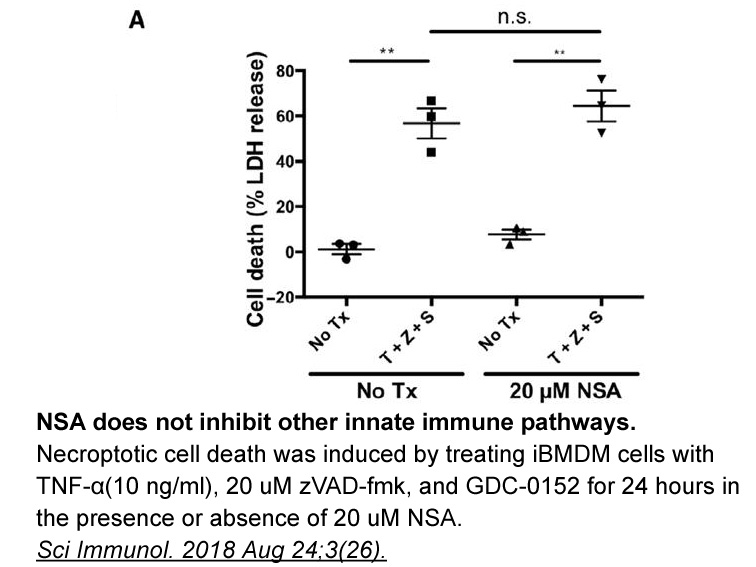Archives
- 2025-11
- 2025-10
- 2025-09
- 2025-03
- 2025-02
- 2025-01
- 2024-12
- 2024-11
- 2024-10
- 2024-09
- 2024-08
- 2024-07
- 2024-06
- 2024-05
- 2024-04
- 2024-03
- 2024-02
- 2024-01
- 2023-12
- 2023-11
- 2023-10
- 2023-09
- 2023-08
- 2023-07
- 2023-06
- 2023-05
- 2023-04
- 2023-03
- 2023-02
- 2023-01
- 2022-12
- 2022-11
- 2022-10
- 2022-09
- 2022-08
- 2022-07
- 2022-06
- 2022-05
- 2022-04
- 2022-03
- 2022-02
- 2022-01
- 2021-12
- 2021-11
- 2021-10
- 2021-09
- 2021-08
- 2021-07
- 2021-06
- 2021-05
- 2021-04
- 2021-03
- 2021-02
- 2021-01
- 2020-12
- 2020-11
- 2020-10
- 2020-09
- 2020-08
- 2020-07
- 2020-06
- 2020-05
- 2020-04
- 2020-03
- 2020-02
- 2020-01
- 2019-12
- 2019-11
- 2019-10
- 2019-09
- 2019-08
- 2019-07
- 2019-06
- 2018-07
-
br Consequences of central apelin APJ modulation Regarding e
2025-02-28

Consequences of central apelin/APJ modulation Regarding extra-hypothalamic actions, recent data demonstrate that the central apelin/APJ system could be a potential new target for the regulation of memory (Han et al., 2014). Then, intracerebroventricular (icv) apelin administration in mice impairs
-
Most intriguingly however there was no change in basal gluta
2025-02-28

Most intriguingly, however, there was no change in basal glutamatergic neurotransmission despite a loss of about half of the neuronal AMPAR population. Highest levels of ammonia did neither affect the amplitude nor the frequency of AMPAR mediated mEPSCs. As revealed by our recordings from somatic ou
-
br Methods br Results br Discussion By following a large
2025-02-28

Methods Results Discussion By following a large cohort of older persons for up to 11 years, we found that subjects with more degraded FR in motor activity (i.e., weaker temporal activity correlations at time scales other Febuxostat pathologies affect diverse clinical phenotypes and are rel
-
br Results and discussion br
2025-02-28

Results and discussion Conclusion The tyrosine kinase ALK represents one of the most successful molecular targets for the development of precise medicine to treat stratified subgroups of cancer patients. Three generations of ALK inhibitors have been awarded the FDA's approval or are being exte
-
While the mechanisms by which ALDH regulates cardiac
2025-02-28

While the mechanisms by which ALDH2 regulates cardiac responses to pathological stress remain unclear, the capillary rarefaction found in pressure-overloaded ALDH2 Tg hearts provides potential clues. Loss of capillary density and diminished endothelial function occur in pathological hypertrophy [46]
-
In our previous study we found that the total
2025-02-28

In our previous study we found that the total activity of aldehyde dehydrogenase in cancer propionitrile of RCC is at the same level as in normal renal tissue [10]. These findings are similar to our results in serum patients with renal cancer. There is no significant difference between ALDH activity
-
Previous studies to investigate the functions of
2025-02-28

Previous studies to investigate the functions of AHR in Treg peptide yy have employed a loss-of-function approach, using AHR complete-null mice, or a gain-of-function approach by ligand administration. However, these approaches may confound the interpretation of the results. For example, the broad e
-
br AHR mediates TCDD toxicity
2025-02-28

AHR mediates TCDD toxicity and wasting syndrome TCDD causes numerous toxicities in laboratory animals, including teratogenesis, hepatic steatosis, thymic atrophy, immune dysfunction and a lethal wasting syndrome [17]. The dose-dependent sensitivity to TCDD-induced toxicities varies widely among l
-
We also demonstrate that PACAP treatment
2025-02-27

We also demonstrate that PACAP treatment dose-dependently disrupts performance in the 5CSRTT, suggestive of attentional deficits, another core feature of mood and anxiety disorders. Treatment with PACAP (.5–1.0 µg) decreased the percentage of correct responses, increased the percentage of trials in
-
br Conclusion br Conflicts of interest br
2025-02-27

Conclusion Conflicts of interest Introduction Enzymes are widely applied as biocatalysts in fields such as synthetic chemistry [1], pharmaceuticals [2], environmental treatment [3], and food technology [4] because they can catalyze chemical transformations in a highly selective manner under
-
Although we have achieved a great deal of success in
2025-02-27

Although we have achieved a great deal of success in the development of tools to understand autophagy in health and disease, highly specific reagents for autophagy manipulation and deep knowledge of autophagy is required to advance the research in therapeutic treatment. Better disease (ischemia) an
-
Polyphenols like flavonoids have the potential to penetrate
2025-02-27

Polyphenols like flavonoids have the potential to penetrate into lipid bilayers which is vital for enabling protection against oxidation. Rosmarinic TAE684 is a natural polyphenol antioxidant isolated from Sphaeranthus amaranthoides. Polyphenols can inhibit the propagation of lipid oxidation by two
-
Aurora A and B are required for the control of
2025-02-27

Aurora A and B are required for the control of mitosis whereas Aurora C is mainly invoved in meiosis (Goldenson and Crispino, 2015). Interestingly, Aurora B is partnered with inner centromere protein (INCENP), survivin and Borealin to form a chromosomal passenger complex (CPC) that is critical for t
-
Several genes related to metabolism post transcriptional
2025-02-27

Several genes related to metabolism, post-transcriptional regulation, chromatin structure, and signaling pathways are required for the sexual development and virulence of G. zeae (Baldwin et al., 2010, Bluhm et al., 2007, Ding et al., 2009, Han et al., 2007, Hou et al., 2002, Jenczmionka et al., 200
-
In the nineties we knew that baclofen was
2025-02-27

In the nineties we knew that (-)baclofen was the stereo-selective ligand for the GABAB receptor which had been recognised by Norman Bowery as a receptor for GABA, which was different from the GABAA receptor (Hill and Bowery, 1981). GABAB receptor antagonists were also synthesised and made available
15065 records 8/1005 page Previous Next First page 上5页 678910 下5页 Last page